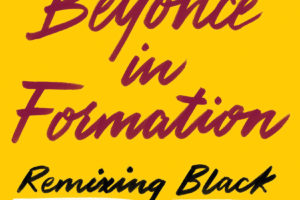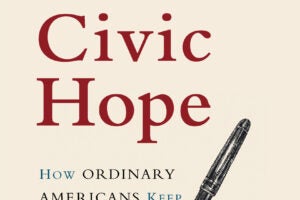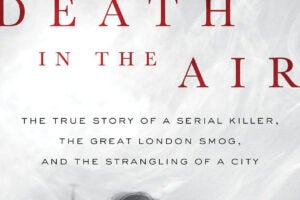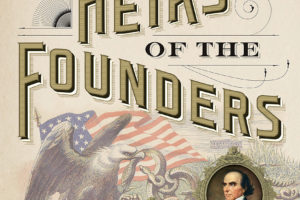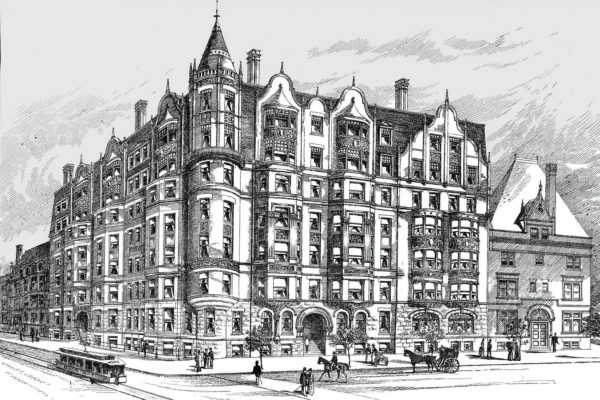Scott Vdoviak has been working at The University of Texas School of Law for 21 years. He completes any work that lecturers need, from assisting professors with research to grading student papers.
“There’s a lot of variety to [my job],” Vdoviak said with a laugh.
When he does find free time, Vdoviak writes under the alias Scott Von Doviak. He has published three books, his most recent a novel called “Charlesgate Confidential.”
Charlesgate is a building in Boston that opened as a hotel in 1891. After the hotel closed due to financial stress, the building became a student dormitory that Vdoviak lived in when he was a college student during the 1980s. The Charlesgate is now luxury condos.
“The book takes you through three different time periods using this building,” Vdoviak explained.
But the central event of the book involves not just the Charlesgate building, but a famous museum heist that took place in the city. The characters in Vdoviak’s story attempt to get their hands on the stolen works.
“It’s actually the largest art heist in history,” Vdoviak said. “Still unsolved. The Gardner Museum Heist.”
The Gardner Museum Heist occurred in early 1990. Thirteen works of art valued at about $500 million were stolen from the Boston museum. The guards on duty at the time reported that they admitted two men posing as police officers into the museum in response to a disturbance call. Once the men were inside, they tied up the guards and committed the largest-value theft of private property in history. Although this crime has been investigated by the Boston police, the FBI and other agencies around the world, no arrests have been made and the art remains missing. The museum is currently offering a $10 million reward for any information that leads to the recovery of the artwork.
This unsolved crime and particularly the hefty reward money are part of what led Vdoviak to write “Charlesgate Confidential.”
“I used that to tell a fictionalized version of the story,” Vdoviak said.
The other inspiration was the Charlesgate itself.
“This was just something that had stuck with me for a long time,” Vdoviak said. “The building was always interesting to me; it’s always had this haunted reputation, basically. There were all these ghost stories even going around when I lived there.”
Vdoviak had lived in Boston for six years and thought a city filled with so much history and folklore would make a compelling novel.
“It’s kind of a creepy-looking building with a Gothic look and these cherub faces sticking out of the walls and stuff,” Vdoviak said. “So it just seemed like a really great setting for a story, but I didn’t want to do a ghost story, so I basically just used it as a setting for a crime story.”
He spent about a year and a half on the novel, including a summer in Boston. He used the Boston Public Library and tried to visit the Charlesgate building itself. But because the building is now used for private residences, he was unsuccessful at getting a glimpse of the inside.
Vdoviak mainly used the internet in his research for facts about the heist and to set the scene for the Charlesgate building in the 1940s.
“[For] the 1940s I had to just do basic online research to see, well, what did this part of town look like then, and where would these people have been hanging out,” Vdoviak said. “I sort of drew on the film noir movies of the ’40s—I used that for my characters.”
He pulled from his own experience to re-create the 1980s.
“The ’80s was when I lived there, so I drew on my own experiences and my friends’,” Vdoviak explained. “And then the present day is sort of more of a police story, wrapping up everything that’s been going on throughout the whole story.”
When asked about his audience, Vdoviak predicted that his book would be particularly popular in Boston, especially for anyone who knows the building that serves as the setting for the entire story. The book’s publisher, Hard Case Crime, was once famous for its covers. It promotes an indie crime genre, so Vdoviak is sure that he would also attract those fans with his book.
“Basically a pulp fiction type of audience,” Vdoviak said with a smile.
Vdoviak introduced his novel at the Texas Book Festival in Austin. He went on a book tour through Boston, Portland and Providence in October, 2018.
OTHER WORKS
Notable publications by staff and faculty members
